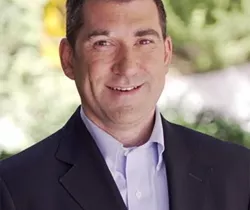One of the biggest communication challenges for trade shows is training booth staff to drive potential leads to scan their badge. The team is often made up of technical people, salespeople and or part-time people unrelated to the company. Depending on the show, your booth may be in a high traffic area with lots of browsers or in the far corner with only the occasional lost attendee. The challenge remains the same. How do you capture as many leads as possible?
Not to fear, this simple approach will tame the trade show tangles.
To begin, it helps to look at a few of the roles in the sales process. We start with a suspect. Someone we suspect might like to buy. Then we have a prospect, someone who is a better candidate for a sale. The prospects turn into leads, someone likely to buy. Many marketing executives will say that is the job of the marketing team and the purpose of the trade show, to create as many leads as possible so that the sales team can later sell to people likely to buy. While there are some shows with other specific purposes or those that sell on the floor, that’s okay, you’ll be able to apply the lessons from this article to those situations, too.
Now that we have that clear, it’s easy to see where you or your team fit in the process. In general, it is safe to say that anyone at the booth, in the booth, near the booth or even thinking about the booth, is temporarily an agent of the marketing team. Your job is to help turn suspects into prospects and then into leads. In basketball, the point is scored when the ball goes through the hoop. In soccer, it’s when the ball is in the net, at a trade show, it’s when the badge is swiped. Some teams make a game of it at the booth each day and share the number of leads with a goal for the team by the end of the week.
Do you want to swipe every badge? Is it good to have as many leads as possible?
Marketing executives will say, “Yes.”. Swipe them all! Some will celebrate how many leads were gathered by the end of the day. Many sales executives would disagree. What does a sales professional hate? A low-quality lead. Why? Because it wastes their time.
I can understand why some say, “Swipe everyone.” It feels good. The “lead count” will be celebrated after the show. But in the months that follow, how successful will the sales team be? In a sea of thousands, how do you pan for gold? How do you screen out the waste so that the sales team can focus on the most likely to buy?
A better way to say it is to swipe every prospect. This leads to the question, how do we sort the suspects from prospects to create leads? Answer this and your sales team will love you.
Everyone at the booth should be trained and practiced in using the 10Q. The 10Q means you talk for 10 seconds and then ask a question. This simple technique will help even the least knowledgeable booth staff increase the chances that they will swipe the badge of a prospect.
But what do you talk about for 10 seconds and what question should you ask?
Aristotle taught us that people tend to reason in either an inductive or deductive pattern. The inductive pattern likes the background details before the main point. The deductive pattern is the opposite and prefers the main point first, and then the background details.
Some people like you to communicate your point first, while others like the details first. Make sure to read their body language. If they walk up to you with clear questions, hear them and see if you can tell how they ask the question. Do they give an explanation of who they are and their company before asking their question? If they do, take care to not cut them off. Listen. Then respond in an inductive way. Perhaps talk about their company for 10 seconds and ask them a question about it. However, if they come up with a deductive question “Do you people use X?” Answer yes, talk for 10 seconds and then ask a qualifying question.
The qualifying questions are often created before the show. They can come from people on the sales team who can tell you what makes a good prospect.
It’s okay to sound like you’re selling at a trade show. This is an important concept. Non-sales people can tend to talk for more than 10 seconds. In fact, go on for 10 minutes and never swipe the badge. So, keep in mind the attendees are okay that you are selling. Selling a badge swipe is not threatening to someone who is a prospect.
As you prepare for your next trade show, take time to discuss with your team how you define a prospect, and what questions should be asked after talking for 10 seconds. Then practice. Knowing all of this is fun, interesting and good to know. When you practice, you’ll bring it to life and see a significant difference in the quality of leads for the follow-up.



Add new comment